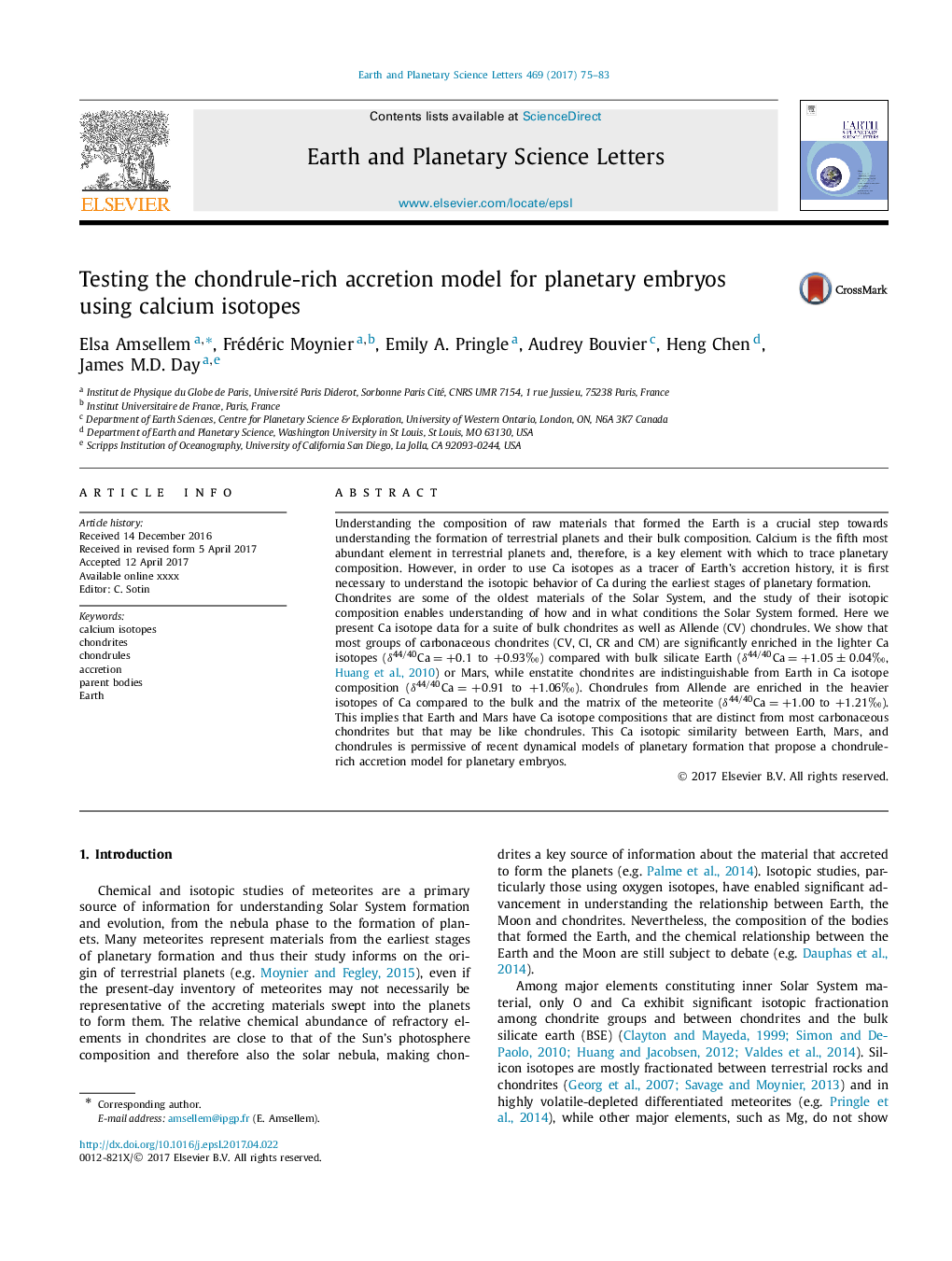| Article ID | Journal | Published Year | Pages | File Type |
|---|---|---|---|---|
| 5779857 | Earth and Planetary Science Letters | 2017 | 9 Pages |
Abstract
Chondrites are some of the oldest materials of the Solar System, and the study of their isotopic composition enables understanding of how and in what conditions the Solar System formed. Here we present Ca isotope data for a suite of bulk chondrites as well as Allende (CV) chondrules. We show that most groups of carbonaceous chondrites (CV, CI, CR and CM) are significantly enriched in the lighter Ca isotopes (δ44/40Ca=+0.1 to +0.93â°) compared with bulk silicate Earth (δ44/40Ca=+1.05±0.04â°, Huang et al., 2010) or Mars, while enstatite chondrites are indistinguishable from Earth in Ca isotope composition (δ44/40Ca=+0.91 to +1.06â°). Chondrules from Allende are enriched in the heavier isotopes of Ca compared to the bulk and the matrix of the meteorite (δ44/40Ca=+1.00 to +1.21â°). This implies that Earth and Mars have Ca isotope compositions that are distinct from most carbonaceous chondrites but that may be like chondrules. This Ca isotopic similarity between Earth, Mars, and chondrules is permissive of recent dynamical models of planetary formation that propose a chondrule-rich accretion model for planetary embryos.
Related Topics
Physical Sciences and Engineering
Earth and Planetary Sciences
Earth and Planetary Sciences (General)
Authors
Elsa Amsellem, Frédéric Moynier, Emily A. Pringle, Audrey Bouvier, Heng Chen, James M.D. Day,
